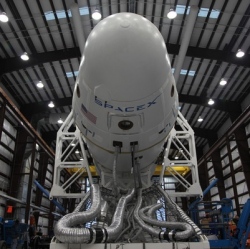
Recently, off the coast of Florida, a 22-story rocket hurtled out of the upper atmosphere, fired its engines, and briefly hovered upright over a stormy Atlantic ocean. The Falcon 9 vehicle and its progeny may revolutionize space travel, at least, that’s the hope.
Most space launches still run into the hundreds of millions of dollars. The Falcon 9 has already slashed costs to roughly $60 million. But that’s not enough for SpaceX CEO, Elon Musk. Early in the company’s history, Musk made it plain that to radically reduce costs, his firm would have to nail the holy grail, reusable rockets.
“If we become the biggest launch company in the world, making money hand over fist, but we’re still not reusable, I will consider us to have failed.” He says the firm’s progress to date has been evolutionary, not revolutionary.
The lion’s share of the launch cost goes into the rocket (fuel makes up just 0.3%). And yet, we discard rockets after launch, leaving them to burn up in the atmosphere or crash into the ocean, and start the next launch from scratch. The recent trial off Florida was the latest milestone in SpaceX’s plans to radically reduce costs by recycling rockets.
SpaceX first attempted to recover rockets by using parachutes to slow reentry and descent over the ocean. After a number of failed efforts, the firm set a new course in 2011, pledging to attempt a rocket-powered descent and landing.
The hope then (and now) was to steer both of the Falcon 9’s stages into a controlled landing back on the launch pad, ready and reusable after a brief refurbishment. (Current tests are attempting to retrieve only the rocket’s first stage.)
